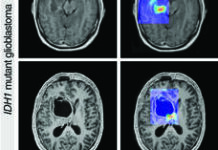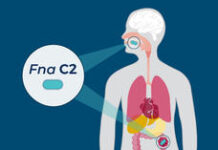In SYMPLIFY, a large-scale prospective investigation of methylation-based multicancer early detection test, the test performance in symptomatic individuals referred from primary care for cancer investigation was 66.3% in terms of sensitivity and 98.4% in terms of specificity.
The investigators showed increased sensitivity for cancer detection with increasing cancer stage, and some variation in accuracy by referral pathway, symptom cluster, and for individual symptoms. This shows the importance of clinical context in interpreting the results and underlines the need for careful evaluation of each use case. The findings are published by Prof. Mark R Middleton of the Department of Oncology, University of Oxford in Oxford, UK, and colleagues on 20 June 2023 in The Lancet Oncology.
The authors wrote in the background that organised screening programmes have not been implemented for most cancers. Most patients diagnosed with cancer first attend primary care with symptoms. Expediting symptomatic cancer diagnosis can be achieved by having a high index of suspicion for cancer when the patient first contacts the healthcare system, through the early use of appropriate diagnostic technologies, and with access to fast-track pathways for specialist assessment.
Currently, only a few tests, such as CA 125 for ovarian cancer, are available in primary care to triage referrals for specific cancer sites. Less specific blood tests, in particular some components of the full blood count, liver function tests, and inflammatory markers, are used to assess risk in symptomatic patients. Novel approaches to risk stratification are urgently required.
Blood-based multicancer early detection tests measure cancer biomarkers, such as genetic and epigenetic changes in circulating tumour DNA or proteins produced by cancer cells. Tests have primarily been used for screening in asymptomatic populations or in detecting cancer recurrence after the treatment. These tests could provide additional diagnostic information in the triage of symptomatic patients with suspected cancer which prompted the study team to investigate the performance of a targeted methylation-based multicancer early detection test in symptomatic patients referred from primary care for urgent cancer investigation.
This multicentre, prospective, observational study was done at National Health Service (NHS) hospital sites in England and Wales. Participants aged 18 or older referred with non-specific symptoms or symptoms potentially due to gynaecological, lung, or upper or lower gastrointestinal cancers were included and gave a blood sample when they attended for urgent investigation. Participants were excluded if they had a history of or had received treatment for an invasive or haematological malignancy diagnosed within the preceding 3 years, were taking cytotoxic or demethylating agents that might interfere with the test or had participated in another study with this test. Patients were followed until diagnostic resolution or up to 9 months.
Cell-free DNA was isolated and the multicancer early detection test performed blinded to the clinical outcome. Multicancer early detection test predictions were compared with the diagnosis obtained by standard care to establish the primary outcomes of overall positive and negative predictive value, sensitivity, and specificity. Outcomes were assessed in participants with a valid multicancer early detection test result and diagnostic resolution. SYMPLIFY study has completed follow-up at all sites.
A total, 6238 participants were recruited between 7 July and 30 November 2021, across 44 hospital sites; 387 were excluded due to staff being unable to draw blood, sample errors, participant withdrawal, or identification of ineligibility after enrolment. Of 5851 clinically evaluable participants, 376 had no multicancer early detection test result and 14 had no information as to final diagnosis, resulting in 5461 included in the final cohort for analysis with an evaluable test result and diagnostic outcome of whom 368 with a cancer diagnosis (6.7%) and 5093 without a cancer diagnosis (93.3%). The median age of participants was 61.9 years, 3609 were female (66.1%) and 1852 were male (33.9%).
The multicancer early detection test detected a cancer signal in 323 cases, in 244 cancer was diagnosed, yielding a positive predictive value of 75.5% (95% confidence interval [CI] 70.5–80.1), negative predictive value of 97.6% (97.1–98.0), sensitivity of 66.3% (61.2–71.1), and specificity of 98.4% (98.1–98.8). Sensitivity increased with increasing age and cancer stage, from 24.2% (95% CI 16.0–34.1) in stage I to 95.3% (88.5–98.7) in stage IV.
For cases in which a cancer signal was detected among patients with cancer, the multicancer early detection test’s prediction of the site of origin was accurate in 85.2% (95% CI 79.8–89.3) of cases. Sensitivity of 80.4% (95% CI 66.1–90.6) and negative predictive value of 99.1% (98.2–99.6) were highest for patients with symptoms mandating investigation for upper gastrointestinal cancer.
The authors wrote that the test could help identify symptomatic patients for investigation who do not meet current referral criteria; the data provide the basis for a prospective, interventional study in patients presenting to primary care with non-specific signs and symptoms. It might also be used to decide whom not to investigate, but in these cases, further work is needed to optimise negative predictive value.
In an accompanied comment, Prof. Jeanne Tie of the Department of Medical Oncology, Peter MacCallum Cancer Centre, and of the Division of Personalised Oncology, the Walter and Eliza Hall Institute of Medical Research, and of the Sir Peter MacCallum Department of Oncology, University of Melbourne, all in Melbourne, VIC, Australia wrote that the authors should be commended for recruiting patients for this large-scale effort in a short timeframe.
However, many unanswered questions remain that need to be addressed examining the utility of multicancer early detection testing in this clinical setting. She questioned about a turnaround time, the time to diagnostic resolution based on the test and how does this compare with the standard investigative pathway, about cost-effectiveness of this approach and does it reduce cancer mortality? Furthermore, she pointed out that due to the varying cancer incidence and referral pathway in different countries or regions, the value of the multicancer early detection test will need to be assessed within the specific context in which it is being implemented.
SYMPLIFY was funded by GRAIL Bio UK, with support from NHS England, NHS Wales, the National Institute for Health Research (NIHR), and Oxford NIHR Biomedical Research Centre.
References
Nicholson BD, Oke J, Virdee PS, et al. Multi-cancer early detection test in symptomatic patients referred for cancer investigation in England and Wales (SYMPLIFY): a large-scale, observational cohort study. The Lancet Oncology; Published online 20 June 2023. DOI: https://doi.org/10.1016/S1470-2045(23)00277-2
Tie J. Triaging suspected cancer with a multi-cancer early detection blood test. The Lancet Oncology; Published online 20 June 2023. DOI: https://doi.org/10.1016/S1470-2045(23)00288-7






